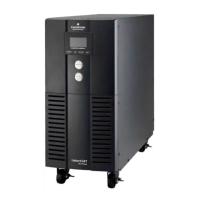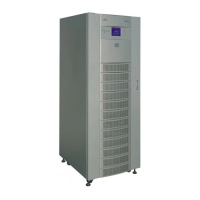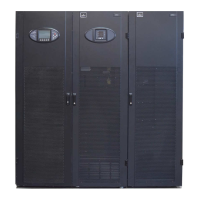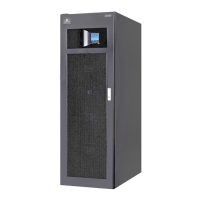Chapter 1 Product Introduction 3
Liebert
®
ITA 16kVA And 20kVA UPS User Manual
1.4 Operating Principle
The operating principle of the UPS is shown in Figure 1-4.
Input filter
Rectifier
/PFC
Inverter
DSP
controller
Bypass
Main input
Bypass input
Output filter
Output
Battery
Charger
Auxiliary
power
Figure 1-4 UPS operating principle
1. The UPS is composed of mains input (main and bypass), I/O filter, rectifier/PFC, charger, inverter, bypass, battery,
DSP controller, auxiliary power and UPS output.
2. When the mains is normal, the rectifier will start, and the charger will charge the battery string. Before turning on
the UPS, the output voltage is the bypass voltage, and the mains supplies power to the load through the bypass. After
turning on the UPS, the electronic transfer switch connects the inverter output to the load, and the mains supplies DC
power to the inverter through the rectifier/PFC circuit. The inverter then converts DC power into pure sine wave AC
power, and supplies the AC power to the load through the electronic transfer switch.
3. When the mains is abnormal, the rectifier/PFC circuit boosts the battery voltage and supplies it to the inverter. The
inverter then converts it into pure sine wave AC power, and supplies the AC power to the load through the electronic
transfer switch.
4. After the mains returns to normal state, the UPS will automatically transfer from Battery mode to Normal mode, the
mains supplies DC power to the inverter through the rectifier/PFC circuit, and then the electronic transfer switch
supplies AC power to the load.
1.5 UPS State And Operation Mode
The UPS state and operation mode include: Normal mode, Bypass mode, Battery mode, ECO mode, Fault state and
Maintenance Bypass mode. The operation schematic diagrams of Normal mode, Bypass mode, Battery mode and
Maintenance Bypass mode are shown in Figure 1-5.
Note
Only when the UPS output power distribution unit (POD for short) is configured, the Maintenance Bypass mode is valid.
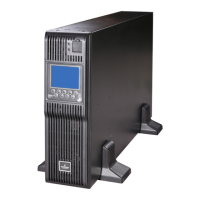
